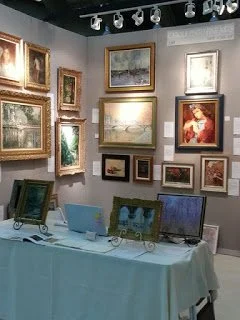THIMGAN HAYDEN’S BLOG
Tag
- Arnold Bocklin 1
- Art Residency 1
- Artegiro 1
- Artsy Life Community 1
- Autumn 1
- Beauty in Art 1
- Big Magic 1
- Books 2
- Calcium Carbonate 1
- Catholic Bishop 1
- Cezanne 2
- Commissions 1
- Georgette Heyer 1
- How-to Video 1
- I Capture the Castle 1
- Inness 1
- Island of the Dead 1
- Italy 3
- Michigan plein-air 2
- Montefiascone 1
- Night Landscapes 1
- Open Studio Plans 1
- PICCOLOs 1
- Painting in Florence 1
- Pierce Cedar Creek Institute 1
- Poetry 2
- Portrait Projects 4
- Pre-Raphaelites 1
- Provence 1
- Rebecca Harp 1
- Watercolor 1
- Why Collect Art? 2
- William Nicholson 1
- about me 1
- about prints 1
- art and life 1
- art business 3
- art trips 2
- black mirror 1
- books 1
- canvas 1
- classical motifs 1
- collecting art 1
- creativity 3
- fall 1
- favorite painters 4
- floral 3
- florals 2
- giclee 1
- gouache 1
Beauty and Bocklin
As humans we aren’t always in the mood for beauty, and that’s totally a valid state of mind. It doesn’t mean beauty is no more. I think Beauty meets us in our deepest moments… it folds us entirely, including our pain and want, in its gentle arms and rocks us back and forth as a loving mother might.
The Simple Guide to Art Collecting
Original art will outlive both the collector and the maker. Since the dawn of time, people have had the compulsion to create art and organize their life experiences into “story” through pictures, poetry, music, and a variety of narrative forms. I’ve stood in front of pieces and wept unexpectedly….
Still Life Inspiration from Sir William Nicholson (1872-1949)
I almost have the feeling that he would set about to paint something and honestly not know how he was going to pull it off. I don’t think he had any doubt in his ability to pull it off, it’s more that he was unafraid of different techniques and even rather unconventional points of view- odd angles, even including rather odd items or compositional elements. His unique perspective makes his work feel fresh to me.
Art Collecting with Carole Pinto Fine Arts
Assembling a Collection in France by Carole Pinto
My inspiration for this article came after one too many strangers
exclaimed, upon learning that I am an art dealer, “I’d love to
buy art, but I can’t afford it!”
ON MY TRIP TO AN ANTIQUES SHOW IN BALTIMORE AND WYETH COUNTRY
Inside three days, I whisked through hundreds of booths of amazing art, saw some favorite pieces in the Cleveland Museum of Art, and visited the Brandywine River Museum, as well as an a tour of Andrew Wyeth’s studio which he used until his death in 2009, if I understood correctly. The Brandywine River setting alone was breathtaking…some pastorals will come out of what I saw there.





